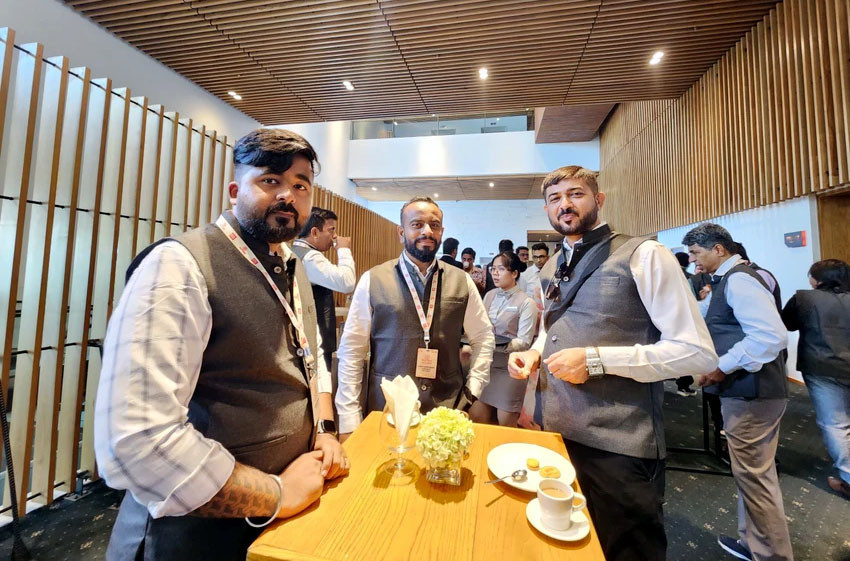
Vu The Binh, chair of the Vietnam Tourism Association (VTA), said that MICE tourism has boomed all over the world over the last two years.
MICE activities were also busier than other types of tourism in Vietnam in 2022. Analysts believe this will be the major segment of Vietnam’s tourism in the future.
Saigontourist reported that it served 40,000 MICE travelers in the third quarter of the year alone, including 32,180 domestic travelers, with over 50 percent from HCM City.
Saigontourist’s deputy CEO Tran Quoc Bao noted that the number of MICE travelers grew by 10 percent over the same period last year. The MICE tourism boom could be seen in the increase in the number of groups of travelers, but also in the number of travelers in each group. The travel firm served groups of thousands on tours to Ho Tram and Phan Thiet.
Businesses in the fields of medicine, pharmacy, finance and banking are the major clients ordering MICE tours. There are almost no clients in the retail industry. And manufacturers tend to cancel travel plans as they have had to cut costs amid the lack of orders.
These findings were from a mini survey conducted at a seminar on MICE tourism held by VTA on September 14.
Le Hanh, CEO of Vietluxtour Hanoi, said that besides small and medium sized groups of travelers, the firm also serves large groups, and that despite current difficulties and cutting of expenditures, many businesses still allocate budgets for MICE tours to create cultural value and make contributions to the community and destinations.
While tightening their budgets for tourism, clients still set high requirements on service quality. In many cases, clients place orders just days before the departure time, which is a challenge for travel firms.
Stiff competition
Trinh Le Anh, deputy chair of the Vietnam MICE Club (VMC), said before the Covid-19 pandemic broke out, travel firms estimated that MICE tourists accounted for 20-30 percent of tourists, and the figure could be up to 60 percent at large firms in high season.
Of these, MICE travelers from Europe accounted for 20 percent. They are high income travelers who spend $700-1,000 a day. Asian travelers spent $400 a day.
However, Dao Viet Long, CEO of Fantasea Travel specializing in receiving Asian travelers, noted that it is difficult to serve MICE clients, and is even more difficult to organize tours for inbound MICE tourists, because Vietnam’s travel firms have to compete fiercely with other destinations.
After Covid-19 was contained, paving the way for the tourism industry to recover, Long said he saw good signs in nearby markets for Vietnam’s MICE tourism, including Malaysia, Singapore and India. However, recently, because of the global economy, Vietnam has had to spend money to scramble for travelers from other well-known markets such as Thailand and China.
According to Long, while Vietnam has had a new open visa policy since August 15 (granting e-visas to citizens of all countries and territories; increasing the duration of travelers’ stay in Vietnam to 90 days; extending the deadline to 45 days for citizens of the countries that have visas waived), Thailand has waived visas for Chinese travelers for five months, starting in September.
However, Do Van Thuc, CEO of Dat Viet Tour, is optimistic about the future and potential of MICE tourism, after having a bad experience when leasing an LED screen at a sky-high fee to organize events for 300 Vietnamese travelers in Bali, Indonesia. He said the prices in Vietnam are very competitive.
“We have a very good and well equipped system of conference rooms at hotels. The facilities in Vietnam can serve groups of travelers of less than 1,000 people,” he said. “Also, Vietnamese service providers can provide anything travelers want, and in a more professional way."
Nguyen Anh Tuan, head of the Tourism Development Research Institute, said that MICE will lead Vietnam’s tourism industry in the future, if Vietnam’s agencies, travel firms and local authorities can cooperate and join forces to develop this type of tourism.
Ngoc Ha